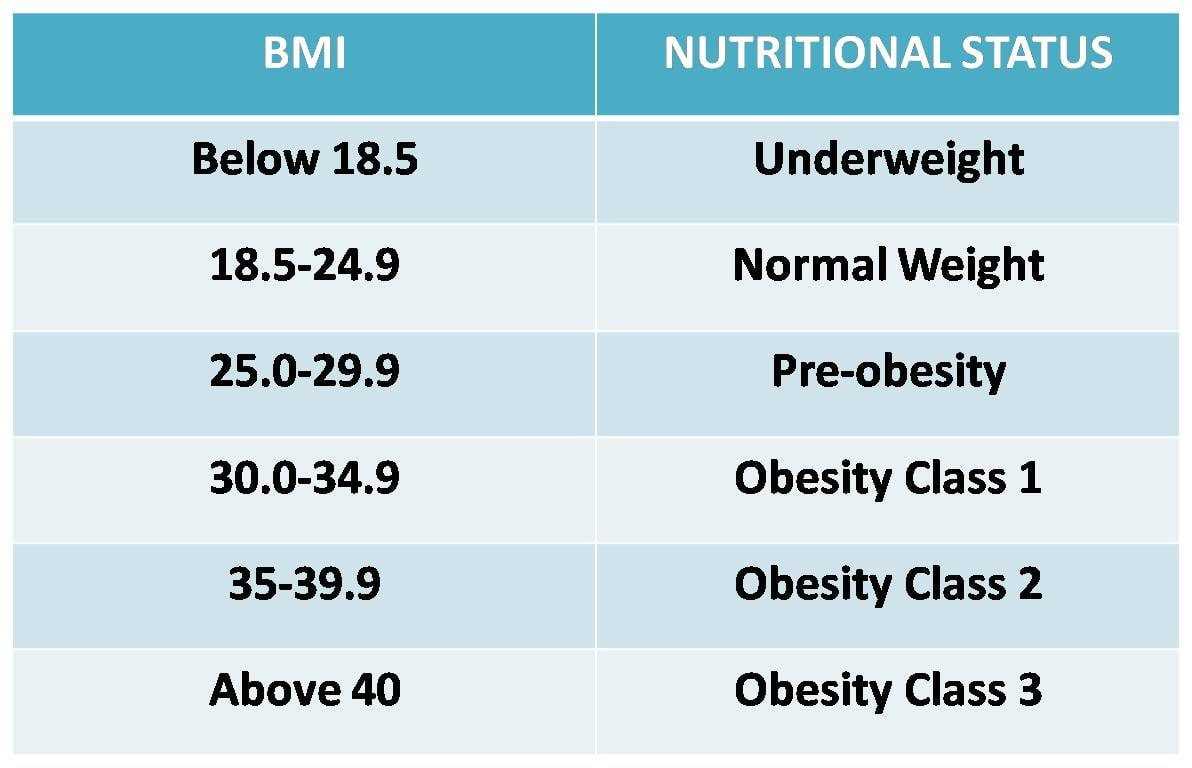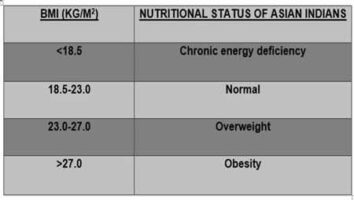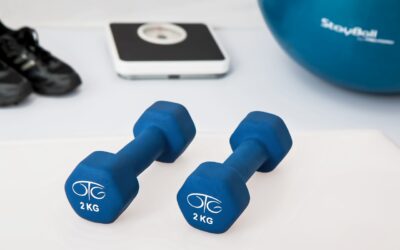In today’s world it can be seen that obesity is increasing as an alarming rate. Most of the people are becoming obese due to their poor lifestyle as well as for their daily work routine. Thereby, today we will be telling you about What is Body Mass Index (BMI) and its limitations and dietary patterns.
Technologies now days made humans fully dependent and lazy that people are lagging behind with their health. So, through “Body Mass Index” you can easily find out your physical condition.
What is Body Mass Index or BMI?
According to layman’s perspective Body Mass Index often known as BMI is used to determine the health of a person by a specific calculation to check whether the person is undernourished, over nourished or healthy.
How to Calculate Your Body Mass Index?
According to World Health Organization (WHO), BMI is formerly called as Quetelet Index, the most widely used height-weight index which is validated measure of nutritional status.(1)
Body mass index formula is often defined by a metric formula or consider as a formula of BMI i.e., weight in kg divided by height in meter square (weight (kg)/ height in meter).
There is another English formula:
BMI= Weight (lb) / (Height [in] X Height [in] ) X 703
History.
Body mass Index was first developed by Adolphe Quetelet a Belgian astronomer in the 19th Century. It is the most common and effective measure tool for to correlate with health problems.
Researchers found that BMI appeared to be a good & affective proxy for adiposity and overweight related problems. It has been found that waist circumference complements BMI as it is a better estimate of visceral fat.
Click here for Body Mass Index Calculator
Classification Of Body Mass Index According To WHO.

Classification of BMI
On the basis of data’s available in Asia, the WHO expert consultation (2004) found that the Asian Indians have a higher percentage of fat than Caucasians of same age, gender and BMI. As per them the BMI cut offs for Asians are:

BMI Nutritional Status
BMI Is Applicable For.
It can be a good measure for obesity for all, but it fails to provide actual information regarding body compositions like muscle, bone, and other tissues.
- It misses normal weight obesity– it simply measures as per height and weight but it does not account on that from where the weight comes from- lean tissue or fat.
- Overestimates risk for some.
Limitations Of Body Mass Index Or BMI.
- Body builders and weight lifters.
- Some high performance athlete person.
- Pregnant women.
- People those having eating disorders.
- Elderly people.
- Persons with physical disability.
- Body Mass Index is not applicable for the Individuals below 18 years.
How To Lower BMI?
Obesity and overweight are increasing in an alarming rate. It is due to the lifestyle and for the eating habits. Most of the studies showed that excess consuming of unhealthy diets leading obesity and overweight.
Due to their busy schedule they are unable to cook food at home and prefers fast foods. Eating such foods on a regular basis making people to obese, which reflect in BMI. Gaining weight is not a good sign for the health.
The more good and specific your dietary pattern will be, the more you will be fit and healthy. So if dietary pattern is good it will show a good reflection in BMI. Always need to prefer a healthy nutritional plate of food containing 3 major macronutrients along with micronutrients. A healthy nutritional plate of nutrients be like –
½ of your plate– vegetables and fruits- always look for color and variety.
¼ of your plate– whole grains like brown rice, oats, whole wheat etc.
¼ of your plate– protein power like poultry, beans, fish, egg etc.
So if we look into little bit with details in how much a person needed in their daily life.
Amount of intake of nutrients that need to consume everyday depends upon 3 factors, i.e., age, sex and level of activity a person is doing.
Whole Grains.
For healthy diet whole grains are essential. Any food which are made of wheat, oats, barley etc. or cereal products of grain. Whole grains divided into 2 subgroups which are whole and refined grains.
Whole grains like whole kernel – bran, endosperm and germ while refined grains are those which are milled and processed, means removes bran and germ.
Minimum 3-8 ounces of gram need to be consumed but all this requirements may vary according to your lifestyle and the amount of physical activity you perform everyday.
Proteins.

Protein rich foods should be include in your diet to improve and maintain your health. Essentials proteins are always good to be keeping in your diet. It is suggested that 8 ounce of protein should be taken in your diet to maintain a proper health.
Mainly good source proteins are from animals but the people who are vegetarians can get proteins from food like beans and peas, processed soy products etc.
Fruits.

Generally, 1-2 cups of fruits needed for an individual in daily life or 1 whole fruits per day. But according to the persons activity consumption level will differ.
Vegetables.

According to nutrient content in vegetable, they are organized into five subgroups like dark-green vegetables, starchy vegetables, red and orange color vegetables, peas and beans, lastly other vegetables.
Consuming vegetables more is always good as they contain a good amount of vitamins and minerals which are beneficial to maintain your health.
Dairy.
Milk and milk products that retain their calcium content like cheese, yogurt are a part of dairy products. 4.5 ounces of milk is recommended in daily life.
Physical Activity Associated With Body Mass Index.
Well apart from all these factors physical activity is also one of the key factor which is associated with BMI. Less amount of physical activity leads to weight gain through which BMI can be graded as over weight or will fall in category of obesity.
According to WHO it is recommended that daily exercise for at least 150 minutes is good for an individual to stay fit and healthy. As per age groups and physical exercise times will differ for person to persons.
So, if an individual maintains a regularity of exercise then it could be a chance to stay fit always and may categorize in BMI normal range box.
Frequently Asked Question.
A normal BMI of a person is 18.5 and less than 18.5 means that a person is underweight. A BMI range between 18.5 and 24.9 is an ideal BMI of a person and between 25 and 29.9 is falls in overweight category. A BMI over 30 indicates excessive overweight or obesity.
You are considered as normal if your BMI is between 18.5 to 24.9. This is a healthy weight which reduce many serious health issues and means you will lead a healthy life. If your BMI is between 25-29.9 then you are consider as an overweight.
Follow this procedure to measure or workout your BMI at home,
At first divide your weight in kilograms (kg) by your height in meters.
Now divide the answer by your height again.
This figure can then be compared against a chart of healthy weights for each height.
Accordingly to WHO a normal BMI of a healthy person is between 18.5 and 24.9.
By using your BMI (Body Mass Index), age and gender you can find out your body fat percentage.
Formula to find out Child’s Body Fat percentage,
(1.51 x BMI) – (0.70 x Age) – (3.6 x gender) + 1.4.
Formula to find out Adult’s Body Fat percentage
(1.20 x BMI) + (0.23 x Age) – (10.8 x gender) – 5.4.
*Note : Use gender (male = 1, female = 0).
There are no as such hard and fast guidelines like how much to run according to BMI because we all are different.
Bottom Line.
Holistic approach and several measurements should taken to assess weight and health. Always stay motivated and happy with your daily health routine.
Therefore, everyone should always reward themselves with healthful meals at home, eating proper amount of nutrients as well as spent some times in workouts and exercise & yoga in daily routine, so that to come within normal range weight box of Body Mass Index.
+6 Sources
Freaktofit has strict sourcing guidelies and relies on peer-reviewed studies, educational research institutes, and medical organizations. We avoid using tertiary references. You can learn more about how we ensure our content is accurate and up-to-date by reading our editorial policy.
- Malnutrition; https://en.wikipedia.org/wiki/Malnutrition
- Adolphe Quetelet; https://en.wikipedia.org/wiki/Adolphe_Quetelet
- Normal-weight obesity syndrome: dignosis, prevalence, and clinical implications; https://academic.oup.com/nutritionreviews/article/74/9/558/1752252
- Obesity and overweight; https://www.who.int/news-room/fact-sheets/detail/obesity-and-overweight
- Noncommunicable diseases; http://www.emro.who.int/noncommunicable-diseases/causes/unhealthy-diets.html
- Dietary patterns: from nutritional epidemiologic analysis to national guidelines; https://www.ncbi.nlm.nih.gov/pmc/articles/PMC4409695/

 Workout
Workout
 Meditation
Meditation


 Stories
Stories


 Podcast
Podcast E-book
E-book











